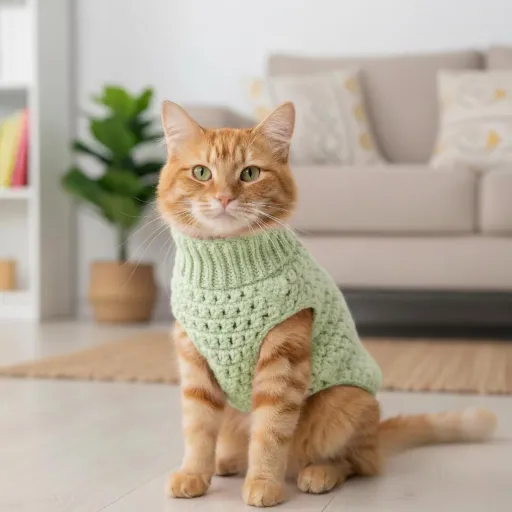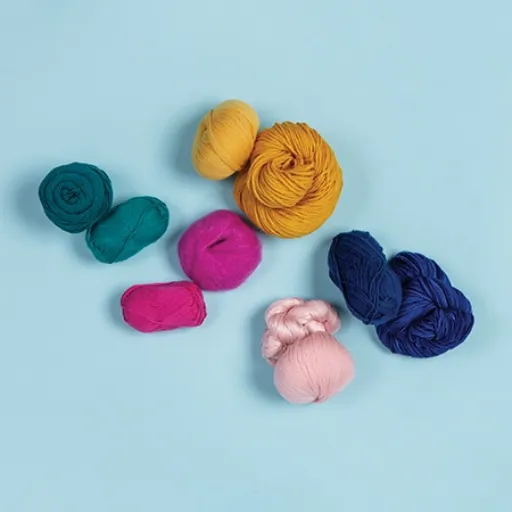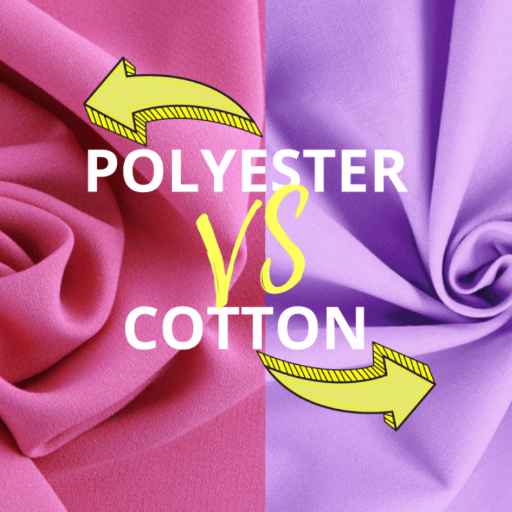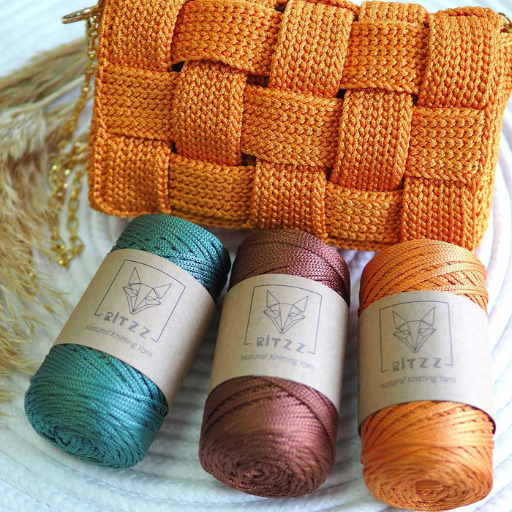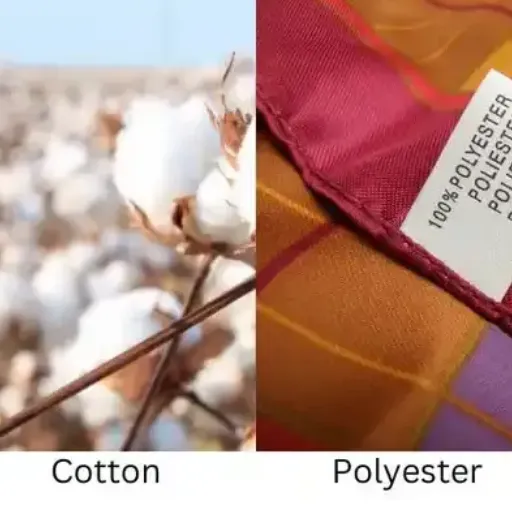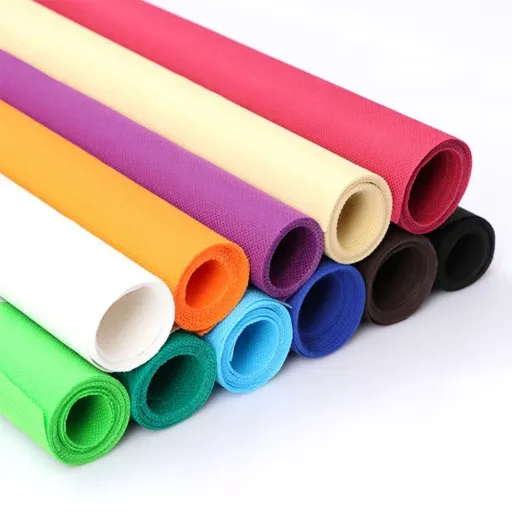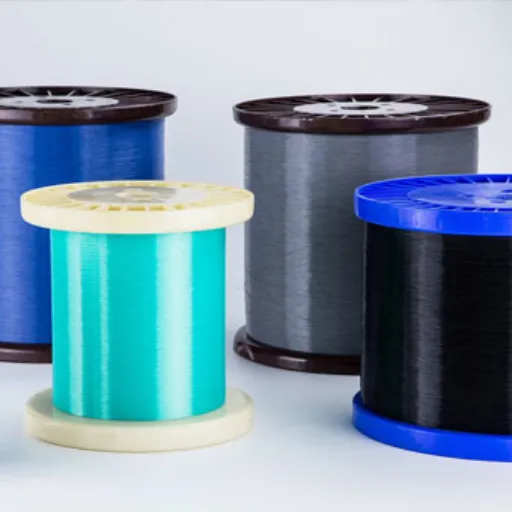Viscose fabric has earned an eminently versatile title and is used truly widely, considering it has entered the realm of the textile and fashion industries. They are soft, air-through, and downright quite like silk, from elegant dresses to household items. So, what exactly is viscose, and why has it become so popular? This blog is a deep-dive into this fascinating world of viscose cloth. It touches on its history, manufacturing method, advantages, and some disadvantages to ponder over. So be it you are into fashion, sustainability, or just plain curious about the fabric surrounding you, this article will give you insights into the gist of viscose and the way it fits into modern life.
Introduction to Viscose Fabric
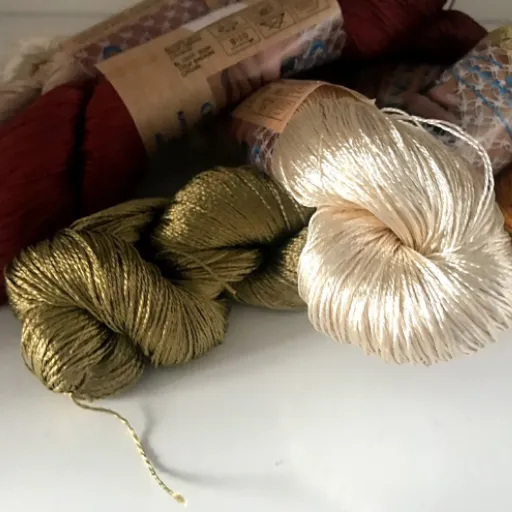
What Is Viscose?
Viscose is a fabric produced from regenerated cellulose fibers, primarily wood pulp. It is considered a semi-synthetic because, although it has natural origins from the trees, it goes through heavy chemical processes to be converted into the end product. Hence, it is soft, lightweight, and versatile by nature, often said to be silk in touch and look.
The making process starts with the dissolving of wood pulp into a chemical solution to obtain a thick, honey-like liquid. This thick viscose liquid is then processed further into fibers that can be spun to yarns or woven into textiles. Being able to mimic natural fibers such as cotton or silk, viscose has now been widely utilized in apparel, furnishings, and industrial goods as an economical and comfortable alternative.
The popularity of viscose is largely attributed to its breathability and luxurious feel, suitable for differing climates and uses. However, its manufacturing process has been linked to environmental concerns owing to the chemicals used. Still, strides have been made towards making its production more environmentally sound for the textile world to continue relying upon it.
Why Viscose Holds Great Importance in Current Fashion Industry
Due to its versatility, its price factor, and the option to replicate textiles in terms of feel and look with natural materials such as silk or cotton, in this respect, viscose takes the centre stage today in the fashion industry. Fashion designers treasure viscose because it enables the creation of luxuriously nice yet inexpensive garments for an even larger number of consumers to appreciate the style. Being breathable and lightweight, it fits well with almost any clothing, whether it’s casual or something a bit more formal.
Another important point highlighting the relevance of viscose in fashion is sustainability. Traditionally targeted by environmentalists, the substance itself is nominally clean with the introduction of new processes that aim at reducing the major side-effects of viscose production. Such newer methods use technologies wherein a closed-loop system is being developed, using raw materials that are sustainably sourced, thereby trying to make the production of viscose less contradictory with the concept of environmentally conscious fashion. This gives the balance of utility and sustainability, which keeps viscose as a preferred material among modern consumer tastes.
Finally, viscose lends a much-needed hand to fast production cycles of the fashion world. Designers and manufacturers have found it very handy to stay abreast of rapidly changing trends due to its cheapness and ease of dyeing. So by combining these positive points as well as aiming at the newer aspect of sustainability, viscose goes on to sustain its relevance as well as importance as a fabric in modern-day fashion.
Importance of Understanding Viscose for Consumers
Understanding viscose is a topic of consumer knowledge and, therefore, makes for an informed consumer. Due to its versatility and affordability, viscose is extensively used in textile production. It can be treated to make the fabric soft like cotton or smooth like silk, depending on the end user’s need. Being aware of these properties assists them in deciding whether a particular viscose product complies with their packaging standards related to comfort, durability, or price.
Another important factor concerned is the environmental pollution made by viscose manufacturing. Traditional production of viscose has made a lot of environmental issues, including pollution and deforestation, yet much effort has gone into developing sustainable alternatives like closed-loop processes. Consumers understanding these differences can make the right choices that favor the environment and thereby promote the sustainability of the fashion industry and other sectors.
Yet another vital issue is the care of viscose goods, which aids in the life extension of such goods. Viscose fabrics are generally delicate and may be disposed of with specific washing instructions or handling instructions. Knowing the right way to care for these products will help them stay longer and better, which ultimately gives less waste over time and more value for money.
Defining Viscose and Its Origins
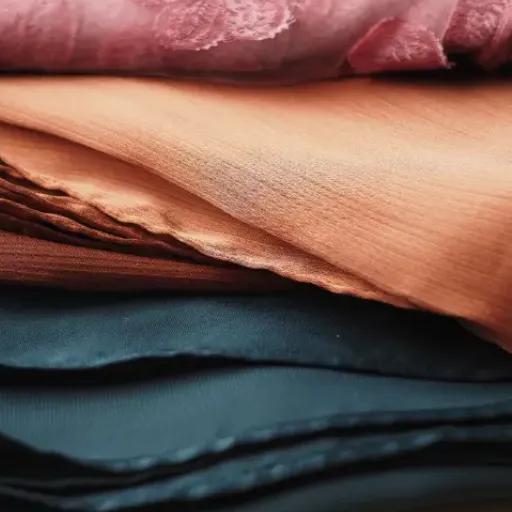
What is Viscose Fabric?
This is a sort of semi-synthetic fabric made out of regenerated cellulose, generally coming from wood pulp. It comes under rayon fabrics and is characterized with a soft and smooth texture that may be compared to natural fibers like silk or cotton. Viscose, being super versatile, finds applications in apparel, upholstery, and other textile works because it feels similar to and looks like a luxury fabric for a fraction of the price.
Several processes involving chemicals are carried out to produce viscose, including the treatment of cellulose with sodium hydroxide and carbon disulfide, which produces a solution called viscose. The viscose solution is turned into fibers or filaments and then used for making fabrics. Though the extremely cheap and comfortable viscose is always appreciated, the method of making it can consume large quantities of resources with the possibility of an environmental hazard when the adverse effects are not controlled.
Nevertheless, the drawbacks do not keep viscose from being favorite since it is breathable, light, and drapes exceedingly well. Moreover, it targets dye absorption, making the colors bright. Anyhow, due to the very delicate nature of this fabric, the best care is recommended for it, with gentle washes on hand and strict avoidance of tough treatments that compromise its lifespan.
History of Viscose: From Discovery to Modern Use
Late 19th-century viscose, or rayon, was developed as an economical alternative to silk. Its invention has been attributed to the three English scientists, Charles Frederick Cross, Edward John Bevan, and Clayton Beadle, who procured a patent for the viscose process in 1892 from the British Patent Office. This chemical treatment gave rise to cellulose, mostly sourced from wood pulp, into fibers that were then spun into fabric. The first commercial production started somewhere in 1905 and was established in Europe, thus letting viscose in the textile field.
During the new century, viscose was popularized throughout the world for its versatility and affordability. It became a product accessible to markets of lower scale. It was mostly preferred because of its smooth texture, good dyeability, and its ability to impersonate silk sheen. But that was much less expensive to produce than silk. With the enhancement of production techniques, it was made more durable and began to be used increasingly for clothing, upholstery, and industrial applications. However, awareness arose that this had serious environmental disadvantages, mainly from chemicals such as carbon disulfide.
Today, viscose remains a key player in the textile industry, though it is faced with increased environmental scrutiny, especially considering sustainability: closed-loop systems that produce less waste are becoming quite popular in more recent times. Being able to house elegance with comfort still keeps the industry alive in design and fashion. But attuned in these days with environment consciousness, both consumers and manufacturers emphasize the need for responsible production practices that reduce environmental degradation and maintain the characteristics of this material.
Viscose as a Semi-Synthetic Fiber
It is called a semi-synthetic fiber because it has natural cellulose derived from plants combined with a chemical process to create a fiber. Being primarily made from wood pulp, viscose goes through transformation stages to change raw cellulose into a soft fabric that is very versatile in its use-for clothes, upholstery, and other textiles. Being a semi-synthetic fiber, it fits fluidly between natural fibers such as cotton and fully synthetic fibers such as polyester, so it has a unique balance between comfort and price.
Among those properties are that it will feel smooth and look like silk; hence, it gets often used to imitate more expensive fabrics such as silk. It is very light; it is soft and comfortable to wear in hot weather. Next to all these properties, it is highly versatile, for it can be spun with other kinds of fibers to get different textural and functional properties to address a wide range of consumer and industry demands.
The method of making viscose is somewhat less appealing considering the chemicals and water usage involved. Many manufacturers are now trying to adopt more sustainable approaches that work with better chemical recovery systems and cellulose sources from well-managed forest operations. These improvements aim to balance the desirability of viscose with an increasing demand for green production methods.
The Manufacturing Process of Viscose
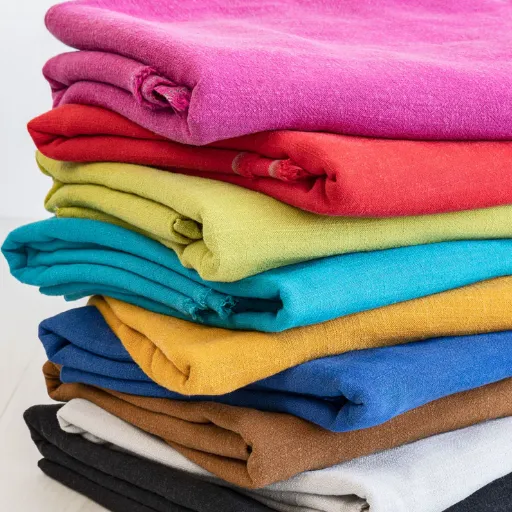
Wood Pulp: Raw Material
Wood pulp plays a major role in viscose production in that it is rich in celluloses needed for eventual fiber. Wood pulp is generated mainly from fast-growing trees such as eucalyptus, pine, or beech. The wood fibers are selected due to their fast renewability and ready ease of processing, making them extensively used in viscose manufacturing.
The wood is chipped into small chips and then treated to separate the cellulose from the lignin and other natural substances. This step is called the pulping form, and it produces purified cellulose, which acts as a basis for viscose manufacturing. Increasing sustainable forestry is encouraged during this stage to reduce the environmental impact of raw material sourcing and guarantee long-term resource availability.
Initiatives toward sustainable sourcing of wood pulp include certification by FSC to ensure responsible harvesting. Manufacturers are also looking into other potential alternatives such as recycled materials or non-traditional wood sources, like bamboo and agricultural residues, to reduce dependence on traditional wood pulp. These changes are intended to strike a balance between fulfilling production demands and conserving natural ecosystems.
Step-by-Step Process: How Viscose is Made
- Preparation of Cellulose: The very first process involves getting cellulose from wood pulp or any other plant-based sources. This cellulose material would be then washed off meticulously to ensure no impurities remain and subsequently shredded into small pieces for forming a uniform material for the processes to follow.
- Alkali Treatment: The shredded cellulose is treated with a chemical solution, usually sodium hydroxide, to swell and soften the fibers. During this stage, the cellulose is converted into an alkali cellulose compound thereby making it easier to transform farther along the process.
- Aging and Xanthation: The alkali cellulose undergoes aging in controlled conditions to develop the required chemical structure. After this aging stage, the material is treated with carbon disulfide to convert it into cellulose xanthate: a required set of properties for extrusion.
- Dissolution: The cellulose xanthate dissolves in a diluted alkali solution, thereby forming a viscous liquid, hence, the word “viscose.” This solution is filtered to remove any insoluble matter so that a completely smooth spinning mixture is obtained.
- Spinning into Fibers: The viscose liquid solution is extruded through fine holes of the spinneret and solidified into fibers in the chemical bath. These fibers are then articulated into the desired strength and flexibility by several processes.
- Final Processing: From here, the fibers are cut into the desired lengths for further use or continuously wound onto bobbins for the formation of sheet-like materials. These fibers undergo further washing and chemical treatment to remove all traces of chemicals so that the fibers are safe to be used in textiles or other applications.
Chemical Processes in Viscose Production
The production of viscose involves several key chemical processes that transform raw cellulose into a more versatile fiber. The cellulose, usually obtained from wood pulp, is soaked in a sodium hydroxide solution. This process is called alkalization and serves to swell the cellulose and make it more reactive for processing. After alkalization, the mass is shredded into crumbs so as to increase the surface area and is allowed to age under controlled conditions to alter its properties.
Xanthation is the next important step in the process, whereby carbon disulfide reacts with alkali-treated cellulose to produce cellulose xanthate. This intermediate is then dissolved in dilute sodium hydroxide to form a viscous, orange-colored liquid called viscose. The viscose solution is filtered to remove impurities that could affect the uniformity and quality of the fibers downstream.
Viscose is then extruded through spinnerettes into a coagulating bath of sulfuric acid and other chemicals, which coagulates the fibers by regenerating the cellulose. After the extruding and coagulating processes, the fibers undergo washing and chemical treatments to make sure that they are clean, safe, and ready for further use in textiles or other products. These steps depend on precise destructive chemical interactions to construct the desired property; thus, making viscose production a difficult yet elegant operation.
Characteristics of Viscose Fabric
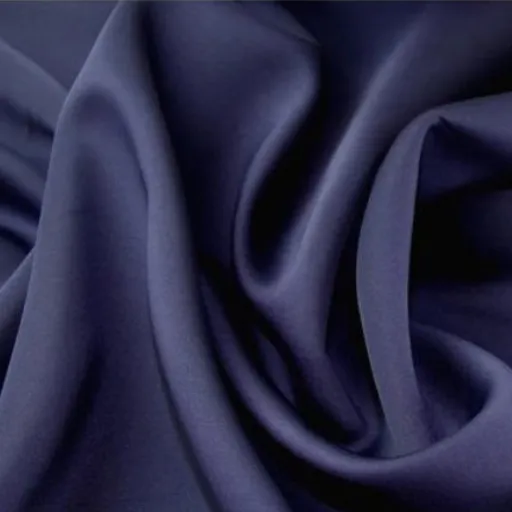
Soft and Breathable Viscose
Viscose fabric is widely known for the comfort of its softness and one of the primary reasons for its widespread use in apparel and home textiles. The material feels soft and smooth against one’s skin, almost as though it carries a glimmer of the soft touch of natural fibers like silk or cotton. Such peculiar touch provides comfort, even to people with sensitive skin, thus making viscose a preferred option for garments that stay close to the body.
The second major characteristic of viscose is breathability. The air freely flows through the fabric; hence it is suited for the regulation of body temperature. It is an excellent option for warm or humid climates as it cools down and relaxes the wearer. The moisture-wicking ability of viscose maximizes comfort in situations that require activity or are laid-back.
Both softness and breathability are essential factors to define the vast scope of the uses of viscose. Clothes for casual wear such as t-shirts and blouses, luxurious bedding, and ornamental textiles, viscose combines comfort with utility; these features set viscose apart as a material with proper consideration for both ease and function.
Applications are everywhere: from apparel to home textiles
This, indeed, is a highly versatile fabric, with one foot on the functional side and the other on the comfort side of the partition, thereby defining its broad spectrum of applicability. It is said to be suitable for clothing as it insulates softness and breathability. Common everyday wear, ranging from dresses, shirts, and undergarments, can benefit from the ease of movement and lightness bestowed by the sky. The material’s ability to limber up for a chic outfit provides the designer another tool of some comfort. Apart from clothing, viscose is important in home textiles. In the realm of bed gear, sheets, and pillowcases are made with viscose, the silky feel on the skin, and moisture absorption guarantee a glamorous and comfortable stay. In curtaining, upholstery, and decorating textiles, viscose endows a touch of refinement to any interior occasion.
Its scope for diversification extends to industrial applications; it is incorporated into blended fabrics and non-woven materials. Viscose fibre, due to its capability of blending with others, can enhance the performances of fabrics that are used in applications such as medical textiles or environment-friendly products. Such an admirable range characterizes viscose as a material that stylishly satisfies the demands of fashion and practicality, hence standing as a trusted choice for use across several sectors.
Comparing Viscose with Other Fibers: Rayon, Modal, and Bamboo Viscose
| Fiber Type | Characteristics | Advantages | Considerations |
|---|---|---|---|
| Viscose | Soft, absorbent, versatile, silk-like feel | Affordable, breathable, lightweight | Less durable, wrinkles easily |
| Modal | Enhanced strength, softer than viscose | More durable, less pilling, better air permeability | Higher cost than regular viscose |
| Bamboo Viscose | Moisture-wicking, hypoallergenic properties | Environmentally friendly reputation, great for bedding | Environmental impact varies by production method |
All of these cellulosic fibers, which constitute viscose, modal, and bamboo viscose, are extracted from plant materials but differ in their production processes and properties. Viscose is a highly versatile and inexpensive fiber with all the features of softness and absorbency that make it suitable for clothing and household textiles. However, it tends to be less durable in comparison with the other fibers: it wrinkles easily. Rayon, as the whole category, is most often considered to include viscose as a subtype and can also describe other fibers similar to it. It usually is used to describe fibers whose properties are close to silk, smooth, shiny, and very light.
Modal is considered a high version of rayon in terms of strength and softness. The process of making modal varies somewhat from the one used to make viscose, which gives it the added advantage of being more durable after repeated laundering, thus holding special appeal for high-end fashion and intimates. It offers less pilling and better air permeability compared with viscose, which makes it an enhanced choice for comfort.
The source cellulosic for bamboo viscose is different from regular viscose because it is extracted from bamboo plants. Bamboo viscose enjoys a reputation of being environmentally friendly, though the actual rating depends heavily on just how bamboo and the manufacturing procedure are pursued with sustainability in mind. When used for bedding or performance wear, bamboo viscose offers great moisture-wicking and hypoallergenic qualities. That said, the environmental impact can vary quite a bit, and an interested consumer will do well to research how any given bamboo viscose product is made, rather than assume it is by definition sustainable.
Advantages of Viscose
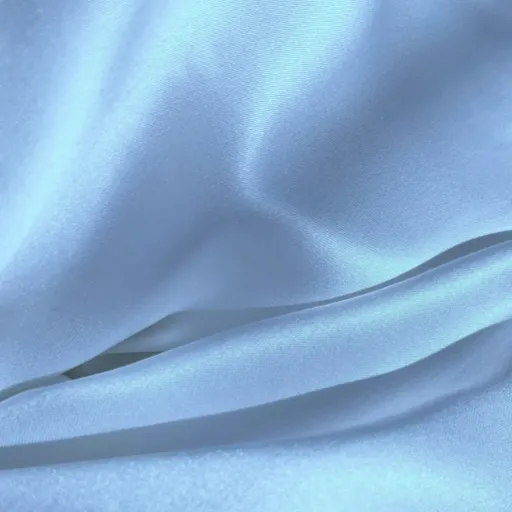
Affordability and Accessibility
It’s considered a cheap fabric, and it’s one of the major advantages of viscose silk. Silk and pure cotton require blowing expensive manufacturing costs; therefore, viscose manufacturing costs have less value. This cost effectiveness attracts manufacturers and buyers alike-to strike a compromise in the balance of quality and price. Viscose fabric in other words can imitate the luxurious touch of expensive fibers such as silk, rendering it affordable to a greater segment of the population.
When it comes to accessibility, the viscose fiber reaches a high rank. The fiber, given its production in numerous countries, is traded in international markets, rendering it available in cardiac forms as clothing, bedding, upholstery, and art objects. The reason for this wide application of viscose is fiber adaptability-Viscose can be mixed with other materials to give the fabric certain qualities that it lacks, such as hardness, softness, elasticity, among others. It is indeed this versatility of the fiber that contributes to its popularity amongst different industries.
It is further preferred because it offers comfort and style at an affordable price. Many customers prefer to buy fabrics that are soft, breathable, and attractive to look at without paying extra. This may combine to make variation in the pricing of viscose manufacture in different processes of manufacture or different regions. However, I would consider viscose to be more-or-less dependable, cheap fabric for ample uses. Today, this very feature attracts it.
Environmental Considerations: Is Viscose Sustainable?
Sustainability Assessment:
- ✅ Natural Origins: Made from renewable wood pulp sources
- ⚠️ Chemical Processing: Uses carbon disulfide and other chemicals that can be harmful
- 🌲 Deforestation Concerns: Can contribute to habitat destruction without proper sourcing
- ♻️ Closed-Loop Systems: New technologies are reducing environmental impact
Viscose is often promoted as a semi-synthetic fabric derived from natural sources, mainly wood pulp, which might make one think it is sustainable. However, this is a little more complicated. In fact, the production of viscose is mainly a chemically intensive process, which uses substances like carbon disulfide that can be harmful to human health and the environment. Untreated, disposal by some manufacturers can pollute the environment.
The other grave issue is regarding the sourcing of raw materials. The demand for wood pulp to make viscose has, in some situations, led to deforestation and habitat destruction in areas of critical ecosystem importance. Unless there are strong regulations and enforceable sustainable forestry practices, the production of viscose can result in diminished biodiversity and increase climate change.
In spite of the drawbacks, some companies are adopting more sustainable approaches to viscose production-all this with the goal of sourcing wood from forests that are responsibly managed and of employing closed-loop production systems where chemicals are recycled and environmental impact is minimized. Even though these options seem very promising, they are yet not adopted by all in the industry, so the sustainability of viscose depends largely on how and where it is made. For an ecologically friendly option, it is worthwhile for consumers to inquire about certain brands and certifications.
Biodegradability of Viscose Fabric
Viscose fabric is considered biodegradable under very precise conditions due to its natural origin. It is cellulose from wood pulp and quite similar in composition to a natural fiber like cotton. When disposed of properly, either on landfills or deep waters, viscose will decompose within days, whereas synthetic fabrics have a lifetime of several decades in the environment. The speed of biodegradation was dependent on the soil, moisture, and other factors such as chemical treatments.
That said, chemicals and other treatments tend to slow down the biodegradation of varnishes, heavy chemical finishes, dyes, or coatings that may have been applied during the production stage. It is therefore important that when looking for a sustainable disposal option, the product be identified as being a product of either untreated or minimally processed viscose.
So, the manufacturing and disposal method of viscose fabrics is an environmental issue. Consumers who want to make environmentally sound decisions must therefore adopt products that are eco-certified and be informed about correct disposal methods.
Frequently Asked Questions (FAQ)
Q: What is viscose?
A: Viscose is a semi-synthetic fiber made from cellulose, the latter obtained from wood pulp or bamboo. Popularly known as artificial silk, it enjoys its usability in almost all facets of the textile industry, including clothing and home furnishings, due to its smooth soft texture.
Q: How does one make viscose?
A: The production of viscose entails dissolving the cellulose in an alkaline chemical solution that is then extruded through small holes in a spinneret to form fibers. The fibers thus formed are then spun into yarn for weaving or knitting into fabric. Treatments can actually vary with the nature of raw materials used-including bamboo pulp or other plant-based raw materials.
Q: Is viscose biodegradable?
A: Yes, it is biodegradable because it consists primarily of cellulose-from a natural source. Unlike polyesters and other synthetic fibers, viscose CAN decompose from the environment; thus it is environmentally friendlier relative to the conventional polyester fabrics.
Q: What are some advantages of wearing viscose clothing?
A: Viscose clothing is breathability, promotes perspiration, and feels luxurious: like silk. It stretches and drapes so well to accommodate a variety of styles and fits. Also, a viscose fiber feels softer than cotton; it can be a massive source of comfort for an individual.
Q: What is the difference between viscose and rayon?
A: VISCose is one type of rayon, the cellulose being processed through one particular process. Basically, all viscose is rayon, but not all of rayon is viscose, as there are other types of rayon, such as cuprammonium rayon.
Q: Is viscose environmentally friendly, in contrast to cotton?
A: Viscose is usually touted as lending itself to better environmental valorization than conventional cotton, primarily because it uses less water in its production. The real environmental impacts can vary widely depending on the practices of the particular viscose factories and the origin of the raw materials.
Q: Can you get sustainable viscose fabrics?
A: Indeed, sustainable viscose fabrics are labeled as Tencel or modal and are made via environmentally sound methods. This kind of viscose employs a closed-loop process that recycles water and solvents and thus reduces the environmental impact throughout the manufacturing process.
Q: What are the disadvantages of viscose?
A: Probably among the most disadvantages is that viscose wrinkles easily and requires hand wash. Also, while it could feel like silk, viscose certainly feels less durable than a more hardy fiber such as polyester or cotton.
Q: How would I use viscose in my wardrobe?
A: Viscose could be used in all kinds of clothing, from dresses to blouses to trousers. Its soft feel and drape are ideal for layering and creating chic ensembles, while the fiber-blend option improves its sturdiness and appearance.
References
- 7 Things You Need to Know About Viscose Fibers – ISPO – Key characteristics of viscose, including its softness, breathability, and versatility as a silk or cotton substitute.
- Fabric Guide: What Is Viscose? – MasterClass – Insights into viscose as a semi-synthetic fabric made from wood pulp, often used as a silk alternative.
- Viscose Fabric: What It Is, Characteristics, Applications – Recovo – Detailed information on the properties, appearance, and uses of viscose fabric.
- How is Viscose Made? – APRayon – A detailed explanation of the production process of viscose, including its historical background.








